YSF Fire Service Information
Introduction
Frequently Asked Questions
Resources
________________
Introduction
Frequently Asked Questions
Question: What is the difference between the current Youth Set Fire Program and Fire Hawks?
Fire Hawks was a brand name for a program that began in the 1980s utilizing a mentor to work with the youth involved in the firesetting behavior. It was originally designed for single parent households in an effort to provide children with a positive role mode. The program was originally oriented on the child's behavior.
Youth Set Fire Programs are now broadened to include the family and community. This was the result of changing needs and demographics of children, families, and communities. These programs build collaborations between communities and regional services in order to provide the best care for both youth and family. The new program meets the criteria outlined in the National Fire Protection Association (NFPA) Standard 1035.
Question: Who can start a Youth Set Fire Program?
Anyone can start a program but positive motivation is not enough. Properly trained personnel know how to support children, youth and families from diverse cultures. Proper training also ensures that personnel provide the highest quality services which minimizes liability to themselves and their service. A successful and effective Interventionist is specified by NFPA Standard 1035 as having:
- Received the Youth Set Prevention and Intervention training developed by the NFPA.
- Strong desire to work with children, youth and families from diverse cultures that are struggling with firesetting behaviors.
- Excellent listening and communication skills necessary to deal effectively with children, youth and families, educate the community and work effectively with other partners.
- An Understanding of fire safety, the ability to work with various stakeholders in the community and effective intuition and creativity.
- Basic understanding of child development, including how children learn and how to motivate clients for growth.
- Prior experience working with children gives the interventionist an advantage.
- Any criminal or child protective services involvement will not pose a risk to children involved in the program.
Question: How do interested parties get Youth Set Fires Training?
The National Fire Academy (NFA) Youth Firesetting Prevention and Intervention training is offered through the Connecticut Fire Academy. This training is also offered directly through the NFA in most other states. The curriculum follows the criteria outlined in the Fire and Life Safety Educator training based on NFA Standard 1035. Dates and details of the training can be found by Contacting Brian Mello.
Question: How many people are needed to have a program?
NFPA identifies two components to the program. Individuals that work directly with the youth called the Interventionist and someone who provides the administrative oversight for the program. These functions can be completed by one person. All programs should have the following support to enhance the sustainability of the program:
- Fire Department approval
- Support from Administration
- Funding
- Town/Regional Support
- Community Partnerships
- Location to meet with youth
- Infrastructure to collect data
- Administrative Support
Question: If you are a Fire Marshal and don't have a program who can you call?
Support is offered by Contacting:
Brian Mello
Coordinator of Juvenile Firesetting Program
Connecticut Fire Academy
Email: Ctmrfire@comcast.net
Phone: 860-214-1770
Ann Adams, LMSW
Program Director
Connecticut Department of Children and Families
Email: Ann.Adams@ct.gov
Phone: 860-550-6398
Resources
Below are resources available for all Fire Service personnel interested in learning more about Youth Set Fires. Also included are training opportunities through the National Fire Academy and Fire Academy
- Connecticut Fire Academy
- Connecticut Fire Academy LIST Serve: To subscribe to this listserv:
- Compose an email to listerv@list.ct.gov from the email address you wish to have added.
- Leave the subject line blank and in the body of the message type: Subscribe LISTSERV NAME (CFPC_news) YourFirstName YourLastName (John Doe)
- You will receive an e-mail confirmation request. Follow the directions to confirm your email address.
- You will then receive an e-mail that you have successfully subscribed to the listserv.
- Fire Marshal Contact List
- State Juvenile Laws
- Training
- Articles on Fire Service Support
- Connecticut Fire Marshals Association
- Minnesota Public Educator Resources:
National Fire Services Trainings
U.S. Fire Administration Course Catalog
U.S. Fire Administration Training Index
Vision 20/20
YFires Data Reporting
Youth Set Fire Media Kit
Upcoming Conferences
no conference are scheduled at this time.

